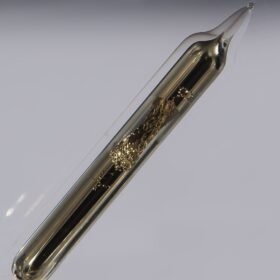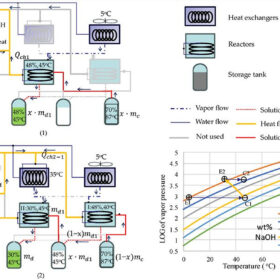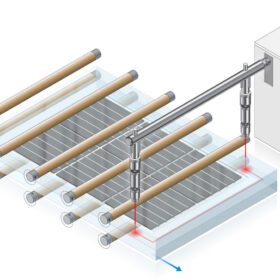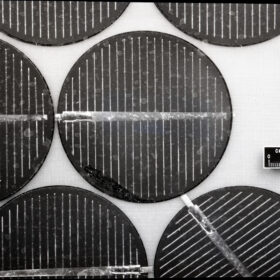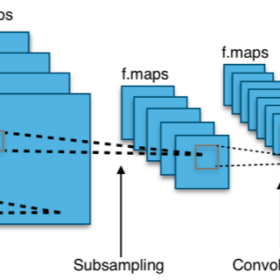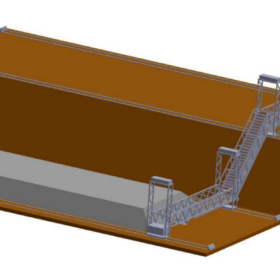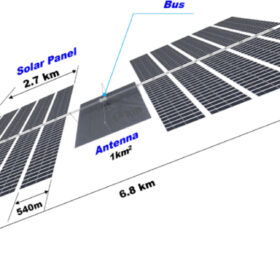Perovskite PV cell, module manufacturing may face material supply risks
German and Swedish researchers calculated the supply of materials to produce perovskite tandem PV at a multi-terawatt-scale, flagging the difficult supply of gold, indium and cesium, well as a need to streamline production of certain materials used for hole-transport layers. “In essence, we might be able to go post-fossil fuels, but we can’t go post-minerals,” the research’s corresponding author, Lukas Wagner, told pv magazine.
Solar-assisted thermochemical heat pump based on caustic soda, water
Researchers in China have designed a two-stage, solar-assisted thermochemical heat pump system that uses caustic soda and water as a working pair. The system is reportedly able to achieve an energy storage density of 363 kWh/m3 and is considered by its creators an ideal solution for residential buildings with limited space.
Improving solar panel recyclability with lasers
The National Renewable Energy Laboratory developed a proof of concept for a method to remove polymers from solar panel manufacturing to enable more efficient recycling.
First silicon solar cell celebrates 70th birthday
On April 25, 1954, US researchers presented the first prototype of a usable solar module. The efficiency at that time was around 6%. A lot has happened since then.
PV module fault detection technique based on convolutional neural network
An international research team has used the convolutional neural network (CNN) deep learning algorithm to identify faults in solar panels. Its work showed the proposed technique has a high degree of accuracy, especially if combined with transfer learning models.
Reducing photovoltaic-thermal module temperature with iron, copper oxide
An international research team has proposed using iron oxide and copper oxide to lower photovoltaic-thermal (PVT) solar module temperature. Their analysis showed that the two compounds were able to lower the panels’ operating temperature by 23.49% and 34.58% respectively.
Indian startup develops sand-based gravity energy storage system
Baud Resources, a clean-tech startup, has developed a gravity energy storage mechanism that uses locally available materials such as sand and industrial waste as its payload. The company is building a 100 MWh pilot plant that will reportedly offer a levelized cost of storage of around INR 2.5 ($0.03)/kWh.
NREL updates interactive chart of solar cell efficiency
The US National Renewable Energy Laboratory (NREL) has updated its research cell efficiency chart for a range of PV technologies.
Solar forecasting based on all sky imaging, long short-term memory
A Dutch research team have developed a solar radiation forecasting model that uses the long short-term memory (LSTM) technique. The proposed methodology reportedly achieves better results than other forecasting approaches.
South Korea plans 120 GW space solar project
Two Korean research institutes are designing the 2.2 km × 2.7 km Korean Space Solar Power Satellite project with the aim of providing approximately 1 TWh of electricity to the Earth per year. The proposed system should use 4,000 sub-solar arrays of 10 m × 270 m, made out of thin film roll-out, with a system power efficiency of 13.5%.
